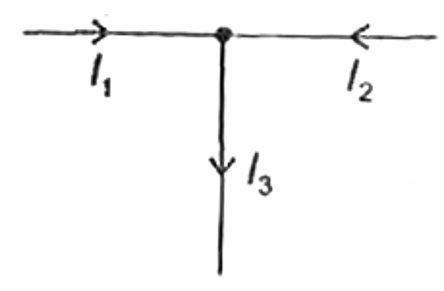Given that Y=asinωt+bt+ct2cosωt. The unit of abc is same as that of
y
y/t
(y/t)2
(y/t)3
The correct Answer is:D
y=asinωt+bt+ct2cosωt
Here a=y,b=y/t,c=y/t2
:. a×b×c=y×y/t×y/t2=(y/t)3
Topper's Solved these Questions
- BOOK - CENGAGE PHYSICSCHAPTER - DIMENSIONS & MEASUREMENTEXERCISE - Multiple Correct2videos
DIMENSIONS & MEASUREMENT
- BOOK - CENGAGE PHYSICSCHAPTER - DIMENSIONS & MEASUREMENTEXERCISE - Linked Comprehension3videos
DIMENSIONS & MEASUREMENT
- BOOK - CENGAGE PHYSICSCHAPTER - DIMENSIONS & MEASUREMENTEXERCISE - Subjective31videos
DIMENSIONS & MEASUREMENT
- BOOK - CENGAGE PHYSICSCHAPTER - CENTRE OF MASSEXERCISE - INTEGER_TYPE1videos
CENTRE OF MASS
- BOOK - CENGAGE PHYSICSCHAPTER - FLUID MECHANICSEXERCISE - INTEGER_TYPE1videos
FLUID MECHANICS
Similar Questions
Knowledge Check
- Question 1 - Select One
The simple harmonic motion of a particle is given by y=3sinωt+4cosωt. Which one of the following is the amplitude of this motion?
A1B5C7D12 - Question 2 - Select One
A point moves in the plane y according to the law x=Asinωt,y=Bcosωt, whereA,B&ω are positive constant.
The acceleration of particle is given by [∵¯r is position vector]A¯a=−ω2¯rB¯a=ω2¯rC¯a=ω¯rD¯a=−ω¯r - Question 3 - Select One
A point moves in the plane y according to the law x=Asinωt,y=Bcosωt, whereA,B&ω are positive constant.
The velocity of particle is given byAv=√A2+B2ωBv=√A2cos2ωt+B2sin2ωtωCv=ω√(A2+B2)−(x2+y2)Dv=ω√(A+B)2−(x+y)2
Which of the following functions of time represents (a) periodic motion, (b) non-periodic motion and (c ) harmonic motion ?
find the period of each periodic motion. [ω is any positive constant]
(i) sin2ωt+cos2ωt
(ii) cosωt+2sin2πt+3cos3πt
(iii) cos2ωt
(iv) sin(2ωt+π/3)View SolutionWhich of the following funchtions of time represent (a) periodic and (b) non-periodic motion? Give the period for each of period motion. (ω is any positive constant )
(i) sinωt+cosωt
(ii) sinωt+cos2ωt+sin4ωt
(iii) e−ωt (iv) logωtView SolutionA particle moves in the xy-plane according to the law x=asin(ωt)andy=a(1−cosωt) where 'a' and 'omega' are constants. Then the particle. follows :
View SolutionA point moves in the plane y according to the law x=Asinωt,y=Bcosωt, whereA,B&ω are positive constant.
The equation for trajectroy for path taken by particle isView SolutionTwo waves y1=asin(ωt−kx) and y2=acos(ωt−kx) superimpose at a point :
View Solution


